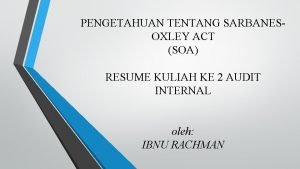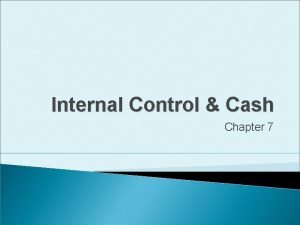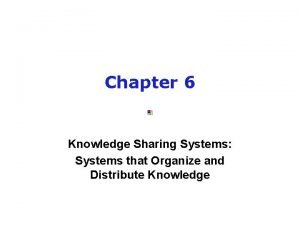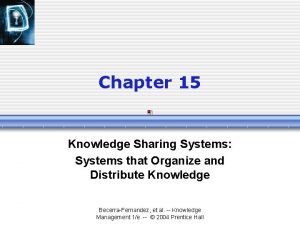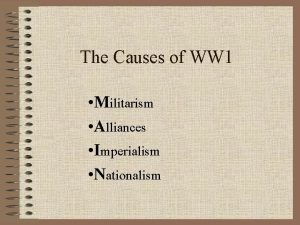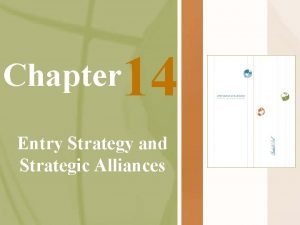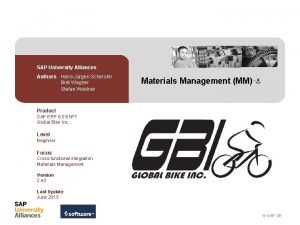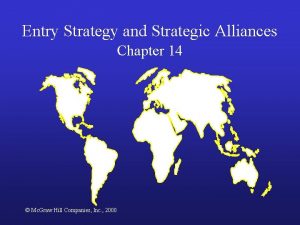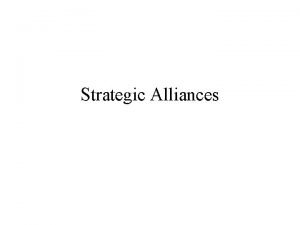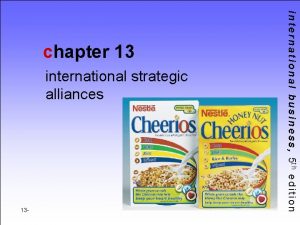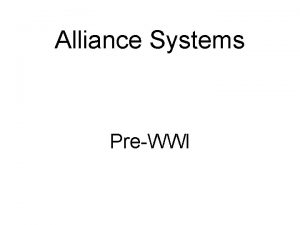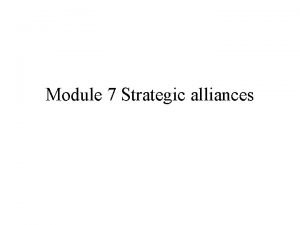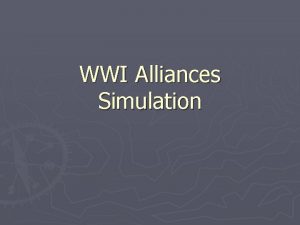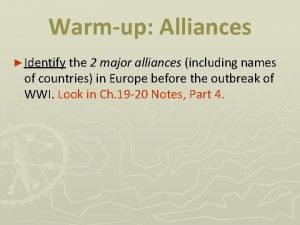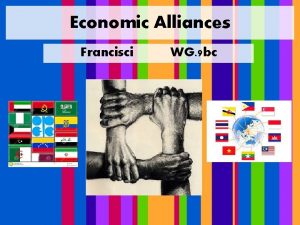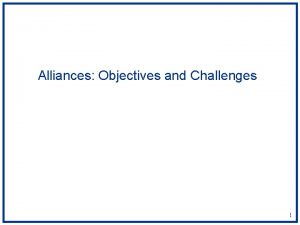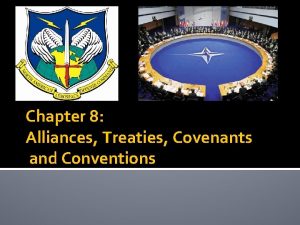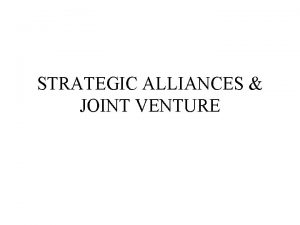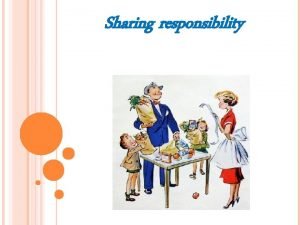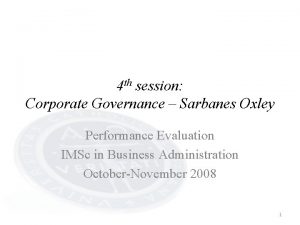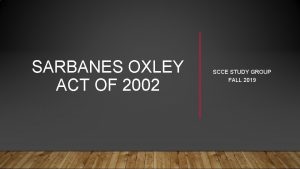The Economics of Knowledge Sharing Alliances Joanne Oxley




























- Slides: 28

The Economics of Knowledge. Sharing Alliances Joanne Oxley Rotman School of Management University of Toronto ESNIE 2006, Cargese

The Economics of Knowledge. Sharing Alliances New Institutional Economics Joanne Oxley Rotman School of Management University of Toronto ESNIE 2006, Cargese

The Economics of Knowledge. Sharing Alliances Transaction Cost Economics Joanne Oxley Rotman School of Management University of Toronto ESNIE 2006, Cargese

Agenda What are knowledge-sharing alliances and why should we study them? What do (we think) we know about knowledge-sharing alliances? n n Examples from the literature Continuing areas of disagreement Future opportunities in alliance research n Linking alliance research to the broader NIE

The Rise of Alliances International alliance formation exploded in the 1980 s and continued apace through most of the 1990 s Alliances are concentrated in high-technology sectors, but almost every industrial sector has some alliance activity Over 50% of alliances are international (i. e. linking firms from different countries) Europe, Japan and US together account for over 90% of global alliances Research suggests that between 50% and 80% of alliances fail to live up to expectations

What in the world is (not) a knowledgesharing alliance? e v t n i o j ty ui q E R&D e r u nt contr Tec hno Fra log act y sh t n e pm o el v e td Pa lic ten en t se Join Rese a part rch ners hip n o i t c du o r p Co nt e m e agre nch ise arin g t c c a r t on Mark eting agree ment r e i l p p u s erm o t s u C hip partners al c i n h c Te g trainineement agr

A Baseline Definition A knowledge-sharing alliance is an arrangement where two firms agree to (jointly) undertake some task that requires non-trivial transfer of knowledge from one party to the other (often in both directions) Knowledge-sharing alliances exist in many domains; technology-sharing alliances are a useful – i. e. , empirically tractable – example Can be useful to think in terms of alliance motives and extent of knowledge-sharing requirements…

Alliance Motives and Knowledge Sharing Requirements

Hazards of Knowledge-Sharing Alliances Appropriability hazards Hold-up problems Free-riding All stem from problems with… ◊ Specifying transaction ◊ Monitoring performance ◊ Enforcing compliance

Alliances as Hybrids

X X Unilateral Contracts Bilateral Contracts • Licenses • Cross-licensing • Supply agreements • Co-development / R&D agreements • Marketing and distribution agreements • Reciprocal supply agreements • Co-marketing agreements Equity Alliances and Joint Ventures Merger or Acquisition “Pure” Market Exchange Market-Hierarchy Continuum of Alliance Forms Oxley, 1997

Structuring Knowledge-Sharing Alliances Partner identities Content / transaction characteristics Governance

What Determines How? WHO? WHAT? HOW? • Pisano, 1989 • Gulati, 1995 • Garcia-Canal, 1996 • Oxley, 1997 • Research or design activities • Multiple projects ->More hierarchical alliance forms

Who Determines How? WHO? • Multiple partners increase need for hierarchical controls • Overlapping or prior alliances reduce need for hierarchical controls WHAT? HOW? Pisano, 1989 Gulati, 1995 Oxley, 1997

Different parts of the elephant? TCE KBV Difficult to specify & monitor Tacit / complex know-how Difficult to articulate and transfer Reduce contracting hazards Repeat interactions Increase common understanding

Different parts of the elephant? TCE Difficult to specify & monitor Reduce contracting hazards ? ? ? KBV Tacit / complex know-how Difficult to articulate and transfer Repeat interactions Increase common understanding Overlapping capabilities ? ? ?

Absorptive Capacity “…the ability to evaluate and utilize outside knowledge is largely a function of prior related knowledge. ” (Cohen & Levinthal, 1990) Partner-specific absorptive capacity relates to a firm’s ability to absorb knowledge from a specific outside party, and depends on presence of overlapping knowledge bases (Mowery, et al, 1996; Dyer & Singh, 1998; Lane & Lubatkin, 1998)

Implications of Increased A. C. for Governance: Knowledge-based perspective: n Increased absorptive capacity increases common understanding and ease of knowledge sharing -> reduces need formal governance (equity structure) Transaction cost perspective: n Increased absorptive capacity makes knowledge transfers easier, but also increases hazards of unintended knowledge transfers -> implications for governance not immediately obvious

An inverted U? (Sampson, 2002) High overlapping capabilities -> easy to share knowledge, but little danger of misappropriation -> contractual governance Intermediate levels of overlap -> absorptive capacity still sufficient to support knowledge sharing, but partners have greater incentive to act opportunistically and misappropriate partners’ knowledge -> greater need for hierarchical controls > equity joint venture Low levels of overlap -> reduced absorptive capacity decreases appropriability hazards and reduces need for hierarchical controls -> contractual governance

Different parts of the elephant? TCE KBV Difficult to specify & monitor Tacit / complex know-how Difficult to articulate and transfer Reduce contracting hazards Repeat interactions Increase common understanding Increase OR decrease hazards Barrier to contracting Overlapping capabilities Weak contracting law Increase common understanding No effect?

From Who/What/How… …to “So What? ”

Measurable impact? Do knowledge-sharing alliances have a measurable impact on a firm’s knowledge base? Ø Yes Mowery, Oxley & Silverman, 1996, 1998, 2001 – changes in patent citation patterns Sampson, 2006 – changes in patenting rates Does governance matter? Ø Yes Sampson, 2004, 2006 – “mismatched” governance in R&D alliance has patenting penalty Oxley & Wada, 2006 – joint ventures increase alliancerelated knowledge flows, but unrelated knowledge flows are lower than in “bare” licensing agreements

Endogeneity (it’s everywhere…) If same concerns drive partner selection, alliance scope, and governance choice, then we have endogenous matching and selection bias And in fact we find that… n n n Mowery, Oxley, Silverman (1998): Firms more likely to choose partners with overlapping capabilities (up to a point) Sampson (2002): Firms with overlapping capabilities more likely to choose equity structures (up to a point) Mowery, Oxley, Silverman (1996): Alliances where partners have greater overlapping capabilities have greater knowledge-flows, as do equity-based alliances. WHOOPS!

(Partial) Methodological Fixes 2 -stage models (instrumental variables; Heckman correction) – Shaver, 1998; Hamilton & Nickerson, 2003 Panel data – Jaffe, et al, 2005 Quasi-experiments – e. g. , regulatory changes – Branstetter, et al, 2004

Who Determines What? • Direct competitors -> reduced alliance scope • Industry laggards; overlapping capabilities -> increased scope WHO? WHAT? HOW? • Oxley & Sampson, 2004 • Reciprocal relationship between scope and governance

Beyond discrete forms to contractual terms & mechanisms Can we develop greater microanalytic detail to understand how specific contract structures “map” onto discrete structural alternatives used so far? Can we deepen our understanding of governance properties of specific alliance agreement terms? n n n Reuer, Arino & Mellewigt, 2005 Ryall & Sampson, 2003 Reuer & Arino, 2002

Conclusions TCE has proven to be a productive lens for analyzing the organization and impact of knowledge-sharing alliances Alliances are a useful test-bed for issues at the forefront of TCE, including understanding the relationship with knowledge-based perspectives

 Joanne oxley
Joanne oxley Sox compliant email
Sox compliant email Carol oxley
Carol oxley Sox act summary
Sox act summary Audit profession
Audit profession Kayla oxley
Kayla oxley Sarbanes-oxley act resume
Sarbanes-oxley act resume The entry to establish a petty cash fund includes
The entry to establish a petty cash fund includes Ruth oxley
Ruth oxley Sarbanne oxley
Sarbanne oxley Knowledge sharing systems
Knowledge sharing systems Knowledge sharing center
Knowledge sharing center What are knowledge sharing systems
What are knowledge sharing systems Knowledge sharing program
Knowledge sharing program Share expertise
Share expertise Imperialism nationalism militarism alliances
Imperialism nationalism militarism alliances Market entry modes for international businesses chapter 7
Market entry modes for international businesses chapter 7 Imperialism in 1900
Imperialism in 1900 Sap material master data
Sap material master data Doctrines et alliances
Doctrines et alliances Causes of ww1
Causes of ww1 Ww2 alliances
Ww2 alliances Alliances and acquisitions
Alliances and acquisitions Entry strategy and strategic alliances
Entry strategy and strategic alliances Disadvantages of strategic alliances
Disadvantages of strategic alliances Berlin wall
Berlin wall Types of functional alliances
Types of functional alliances Metternichian
Metternichian Ww1 alliance cartoon
Ww1 alliance cartoon






